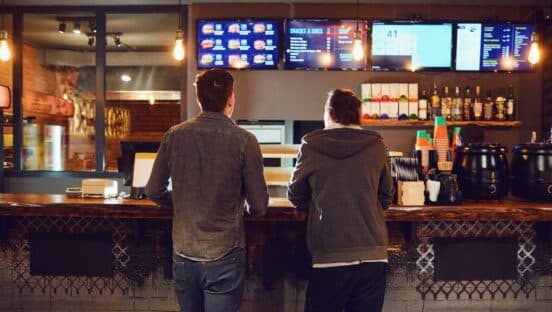Sponsored by Rakuten Ready.
Aging millennial and Gen Z diners now make up a significant consumer base in the U.S. restaurant market, and as their buying power continues to grow, it’s critical for restaurants to prepare for a future driven by the demands of these young consumers. While millennial and Gen Z diners prize convenience like their parents, they are bringing a new list of priorities to the industry.
For example, these young consumers are digital natives more connected to their phones and computers than ever. With a growing dependence on Amazon and other brands like Uber that offer quick buying and transportation options on their phones, it’s no wonder that these diners seek the same type of convenience at restaurants. Though millennial and Gen Z diners expect brands to meet them on any channel, whether in person or online, not all restaurants are prepared to do so.
“Americans are spending so much time glued to screens it’s starting to manifest in how consumers buy and connect with businesses,” says Jaron Waldman, CEO of Rakuten Ready. “It’s a tidal wave that’s caught certain retailers and restaurants flat footed, but it’s not slowing down—it’s accelerating.”
While some restaurants may be getting by now with their drive-thru and dining-room only strategies, restaurants that don’t prepare for this omnichannel future may soon be left behind. Though many brands have made forays into this connected world by adding delivery services, delivery comes with its own challenges. Not only must restaurants manage teams of drivers or third-party partnerships to make it happen, but this increases the complexity of restaurant management and significantly eats into profits.
Additionally, though delivery adds convenience when consumers don’t want to leave home, it still requires significant wait times in order to fulfill orders. Along with the rise of “buy online, pickup in store” (BOPIS) options in retail, consumers are looking for faster options that provide instant gratification in restaurants, too.
In fact, according to a study conducted by Greenberg Inc. and Rakuten Ready, when asked about why they used BOPIS options at restaurants, 48 percent of surveyed consumers said it was because they wanted food to be ready when they got there, and 37 percent said it was because they didn’t want to wait in line. Additionally, 30 percent said BOPIS was faster than having food delivered.
“Consumers are time strapped, and when they go out to the store and want to pick up food on the way home, they don’t want to wait in line,” Waldman says. “A lot of people are talking about delivery, but a seamless order-ahead experience on a mobile app that ensures my food is hot and ready when I arrive may be even more important for younger generations.”
Though in-store dining and delivery are still important channels, it’s crucial for restaurants to offer diners the fast, convenient options they want no matter how they wish to interact with the restaurant. If you aren’t using a true omnichannel approach, can you really say your brand is meeting consumers wherever they are and giving them what they want to keep them coming back for more?
To learn more ways restaurants can future proof their businesses, check out RakutenReady.com/restaurants and the next article in this four-part series in the August print edition of QSR magazine.
By Peggy Carouthers













